Cycling to and from work can save you money and time, improve your fitness, help the environment and be a lot more rewarding than other modes of transport, but some people have yet to be convinced. We’ve already given you our best tips on everything from getting started cycling to work, to saving money, and loads more… so, we thought we’d throw it to the floor and ask road.cc readers for their tips for overcoming the barriers to cycle commuting too. As usual, you all came up trumps.
We got far more replies than we could include here (thanks to all of you), so here are some of the highlights.
This is a big one. People are always citing the weather as a reason not to cycle to work, especially in the UK.
 “There’s nothing like cycling every day to make you realise that it doesn’t rain all the time,” says GMBasix. “And I frequently find that weather forecast apps with dark clouds or two raindrops slightly overegg the experience. It doesn’t always end up raining, and the rain you experience is often lighter than you think. If you’re prepared to wear a waterproof jacket and overtrousers, and/or carry a change of clothes for work (or better still, store them there), the rain will not be a big problem.”
“There’s nothing like cycling every day to make you realise that it doesn’t rain all the time,” says GMBasix. “And I frequently find that weather forecast apps with dark clouds or two raindrops slightly overegg the experience. It doesn’t always end up raining, and the rain you experience is often lighter than you think. If you’re prepared to wear a waterproof jacket and overtrousers, and/or carry a change of clothes for work (or better still, store them there), the rain will not be a big problem.”
samshep says, “I’d add that you don’t need to cycle every day. If it’s really miserable out, use the bus, the train, or drive. There’s no shame in being a fairweather cyclist. Start in May/June or September when it’s drier and you’ll get into the habit before the darker, colder months (when it rains much less often than people think).”
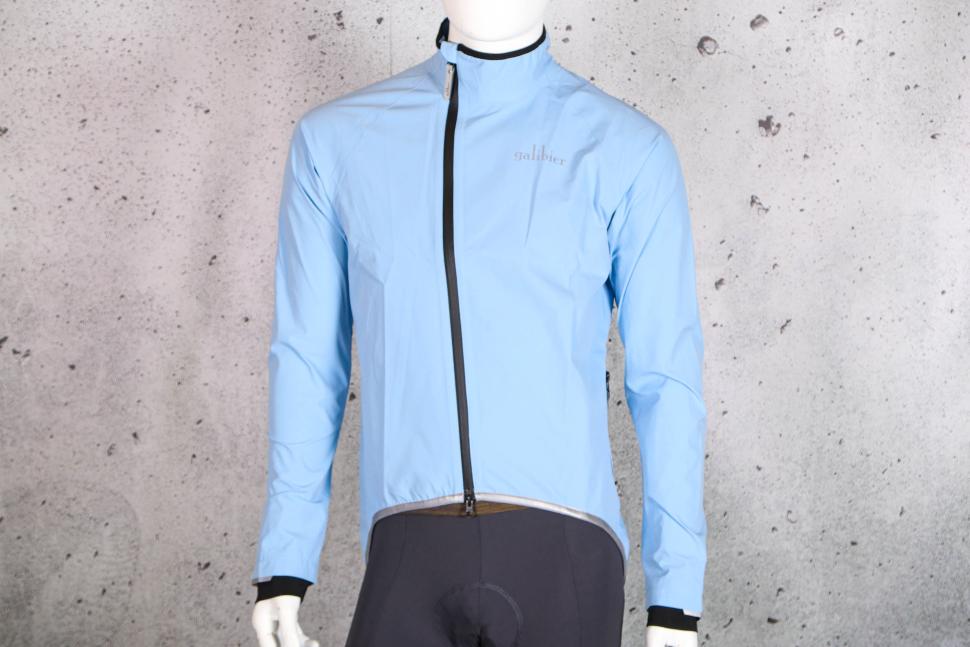 Galibier Tourmalet 4 Jacket (credit: road.cc)
Galibier Tourmalet 4 Jacket (credit: road.cc)
It will doubtless rain from time to time when you’re commuting – that’s life! – but there’s plenty of excellent equipment out there that’ll help you handle it. You’ll need to choose the right waterproof jacket. That’s only sensible. You might want waterproof cycling trousers, gloves and overshoes too.
There are plenty of excellent waterproof backpacks and panniers out there to keep your stuff dry, and there’s a lot of love on the road.cc forum for good old mudguards.
 2025 Pashley Roadfinder – Shimano 105 – rear mudguard and tyre.jpg (credit: road.cc)
2025 Pashley Roadfinder – Shimano 105 – rear mudguard and tyre.jpg (credit: road.cc)
OnYerBike says, “Definitely get proper, full-length mudguards. Even if you have the flexibility to avoid riding in the rain, the roads can stay wet after it has stopped, and you will still get covered in spray without mudguards.”
Also, it’s wise to have dry clothing to change into, just in case. Like they taught you in the Cubs/Scouts/Brownies/Guides/whatever: be prepared.
Global Nomad says, “Always keep a set of clothes at work, including shoes and underwear. This way, you can always have dry stuff to wear if the infrequent rain catches you, or the heat makes you sweat. The time it takes you to change will still normally mean your overall home-to-desk time is quicker than other forms of commuting.”
“I’ll be sweaty all day”
If your workplace provides showers to encourage active travel, happy days. Keep shower gel, a towel, and spare clothing at work and you’re sorted.
“If there isn’t a shower, consider a gym membership near the office, as you could do a session before work and shower there,” says Old Ridgeback.
Another alternative is to take your commute steadily enough that you don’t work up a sweat. This is obviously easier to do on shorter and flatter commutes, and perhaps with the use an e-bike.
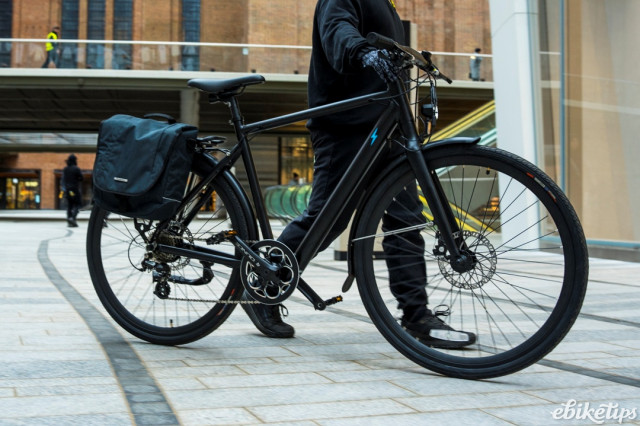 mdavidford says, “You will not necessarily get sweaty. It depends on how enthusiastically you tackle your commute. If you treat it as a time trial, you’ll get sweaty. If you’re prepared to take it in your own time, it’s perfectly possible not to. In really hot weather, you’re going to get sweaty either way, but then you could walk, ride the bus or tube etc.”
mdavidford says, “You will not necessarily get sweaty. It depends on how enthusiastically you tackle your commute. If you treat it as a time trial, you’ll get sweaty. If you’re prepared to take it in your own time, it’s perfectly possible not to. In really hot weather, you’re going to get sweaty either way, but then you could walk, ride the bus or tube etc.”
GMBasix advises you to dress appropriately to avoid getting too sweaty as you ride.
“There’s a reason cyclists often wear Lycra, and it’s partly that it’s very good at dealing with sweat. Layering according to the weather/temperature means you don’t have sweat sticking to you; it’s wicked away.
 2025 Velocio Men’s Merino LUXE Colorblock Jersey.jpg (credit: road.cc)
2025 Velocio Men’s Merino LUXE Colorblock Jersey.jpg (credit: road.cc)
“If you do need to sit all day in the clothes you cycled in, merino wool is often better at avoiding smells than polyester cyclewear.”
Many road.cc forum users suggest a change of clothes once you arrive at work, whether or not you have the opportunity to shower.
samshep says, “If you get sweaty, a quick change of clothes can deal with that. Depending on how fastidious you are, if you can get out of sweaty stuff as soon as possible, you can usually manage with a top-up of deodorant or similar.”
“It’s dangerous”
Cycling is a lot safer than many people think, and the health benefits… well, where do you start? 
In 2024, for example, research published in the British Medical Journal concluded that its findings “provide direct evidence of the health benefits of active commuting”, with those who cycle to work associated with a 47 per cent lower risk of death and a 24 per cent lower risk of hospital admission for cardiovascular disease.
On the flip side, cycle commuters can be involved in road traffic collisions, but the number of reported cyclist casualties per billion miles cycled in Great Britain has been trending downwards for over a decade.
If you need to develop your skills, Bikeability, the government’s national cycle training programme, is available for teenagers and adults as well as for children, and there are various other courses out there.
We also like the book Cyclecraft by John Franklin, which is subtitled: The complete guide to safe and enjoyable cycling for adults and children. It’s no longer in print, but you can still find copies online.
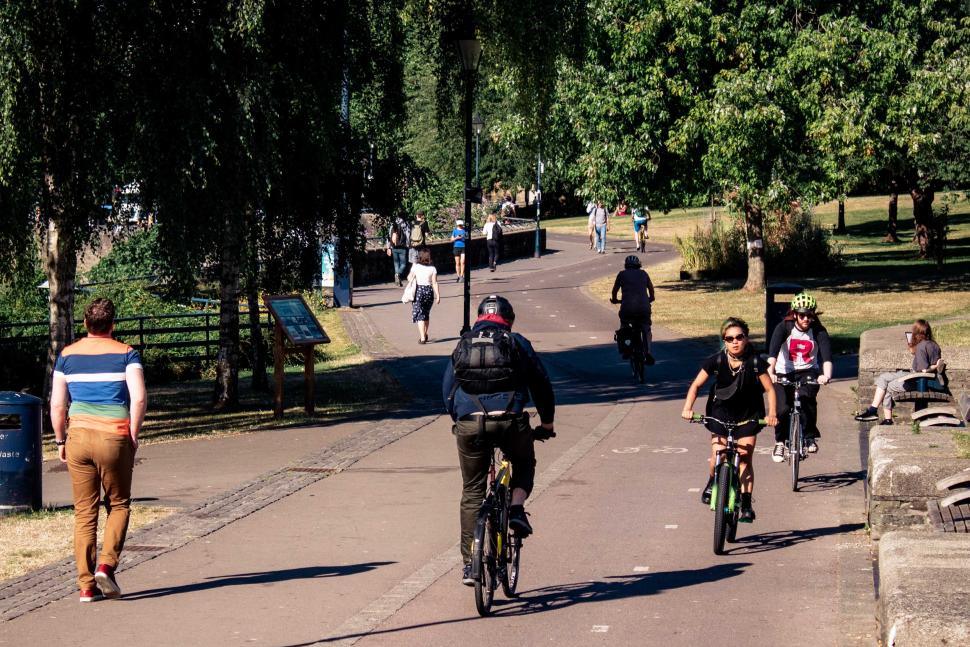 Global Nomad says, “Test different routes to work. Learn where the bus stops are, the fussy junctions and pedestrians. Pay attention to the rhythm of everything around you (including other cyclists) to stay safe. Call out, ring a bell or shout as necessary if someone hasn’t seen you, especially if they have headphones on. Don’t rush.”
Global Nomad says, “Test different routes to work. Learn where the bus stops are, the fussy junctions and pedestrians. Pay attention to the rhythm of everything around you (including other cyclists) to stay safe. Call out, ring a bell or shout as necessary if someone hasn’t seen you, especially if they have headphones on. Don’t rush.”
Rendel Harris says, “If at all possible, avoid school run times in the morning and evening, the two most dangerous half hours on the road, in my opinion.
“Also, get a camera. You don’t have to report people if you don’t want to, but if the worst comes to the worst, having camera evidence to prosecute someone who’s harmed you or to claim on their insurance is really useful.”
“There’s nowhere to store my bike safely”
Some employers provide decent bike storage facilities as a means of encouraging active travel, and it’s one of the factors that Cycling UK assesses when determining Cycle Friendly Employer status.
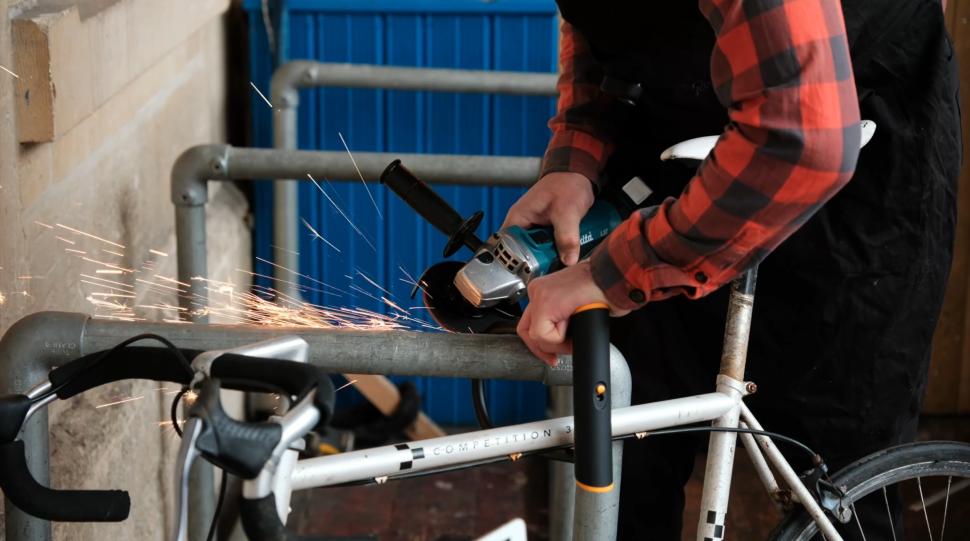 If you leave your bike anywhere in public, you’re going to need a good lock.
If you leave your bike anywhere in public, you’re going to need a good lock.
> Cheap vs expensive bike locks: angle grinder tested
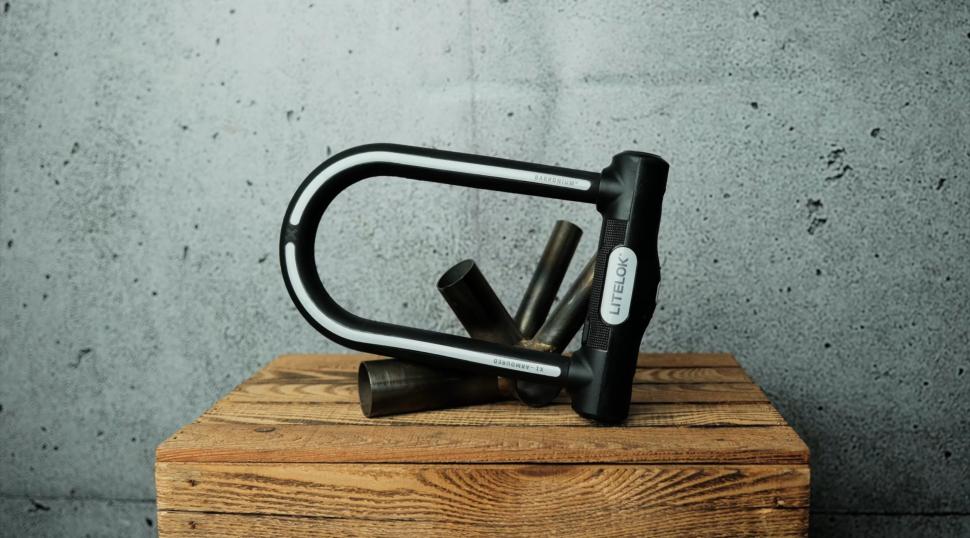 2025 Bike locks testing Litelok X1 (credit: road.cc)
2025 Bike locks testing Litelok X1 (credit: road.cc)
OnYerBike says, “Get an angle grinder-resistant lock. Yes, they are expensive, but definitely worth it in terms of the additional protection they offer. And use it wisely – lock through the frame and rear wheel. I use a Litelok X1 as it’s among the cheapest and lightest angle grinder-resistant options. It doesn’t offer the absolute highest security, but it offers adequate security, and far more than any non-angle grinder-resistant lock.”
> Read our review of the Litelok X1
Many people like a relatively cheap bike for commuting because it’ll be used in all weathers and is less likely to attract the attention of thieves. Plus, of course, it’s cheaper to replace if it does get stolen.
> How to lock your bike when you’re out and about so it’s there when you come back
OldRidgeback says, “Unless you have somewhere secure to lock your bike up at work, then think about using a cheap secondhand bike instead. Just make sure it fits you properly, is functional and in good working order.”
OnYerBike says, “You can normally add bicycles to your home contents insurance policy pretty cheaply, which would cover theft (assuming it’s locked with an approved lock). If you’ve got an expensive bike, a dedicated cycle insurance policy is more expensive but typically offers additional cover (eg damage from vandalism or attempted theft).”
“I’m not fit enough”
If you live miles from work, fair enough, you’ll require a certain level of fitness to ride there and back every day. If you don’t already have it, you could alternate days of riding with days of taking public transport until you’ve developed that fitness.
Stef Marazzi suggests a different approach.
“You can always drive part of the way and cycle the rest,” he says. “Just find a few safe places where you can leave the car all day for free, and ride in from there. It wasn’t until I started doing this myself that I realised there was a whole secret world of people doing it already.”
.jpg) samshep advises starting small and working your way up over time: “I began with a 1.5-mile ride to my local station, then upped it over time to six miles to a slightly further station, before eventually going to 12 miles each way after a couple of cancelled trains.”
samshep advises starting small and working your way up over time: “I began with a 1.5-mile ride to my local station, then upped it over time to six miles to a slightly further station, before eventually going to 12 miles each way after a couple of cancelled trains.”
If you’re riding a short distance across town, chances are that you already have the fitness required, especially if you plan the flattest route possible and take it steady.
If hills are unavoidable, you could get yourself a bike with ultra-low gears or invest in an e-bike. There are thousands of options.
Rendel Harris says, “Decide on your pace and stick to it, don’t get suckered into racing others – they could be 30 years younger, only riding a couple of miles, out for a training ride… I’ve spoiled too many commutes because the ego wouldn’t let me be dropped.”
“A bike will be expensive”
Yes, bikes certainly can be expensive, but not always.
If you want a Colnago Y1Rs like the one Tadej Pogacar rode to victory in the Tour de France, you’re looking at big money, but we’re going out on a limb and saying that your commuting needs are a little different.
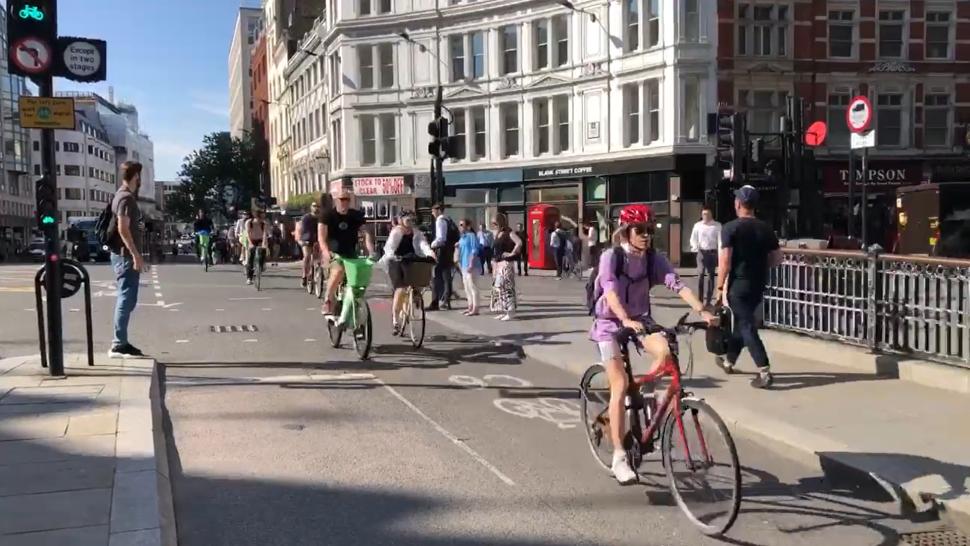 road.cc forum users make it very clear that you don’t need to spend a lot of money on a bike for riding to work.
road.cc forum users make it very clear that you don’t need to spend a lot of money on a bike for riding to work.
“Any old bike will do for starters, don’t go mad,” says Bungle_52, summing up the thoughts of many.
samshep says, “Be sensible. Don’t feel you have to get skinny wheels and drop handlebars (unless that’s what you like, of course). A £500 (or less) hybrid will be perfect for commutes of less than 10 miles, be much sturdier and have all the fittings for racks and mudguards.”
HoldingOn says. “A secondhand bike for very little money will let you try the route without committing too much, or have a look at hire schemes to commit even less.”
Find out whether your employer has set up a Cycle to Work scheme that allows you to save on the cost of a new bike and equipment by paying for it from your pre-tax income.
Of course, commuting by bike allows you to reduce other transport costs: bus and train fares, fuel, parking fees, and so on. If it allows you to ditch the car entirely, you can make huge savings. Even if you do end up spending a lot on a bike, it’ll probably last you years, and the running costs will be low.
“I don’t have the rest of the kit I’ll need”
What about all the extra kit associated with cycling? What do you need? And will it set you back lots of money?
You’ll need a decent waterproof jacket, good lights, and a strong lock, and there’s a lot of love for mudguards on the road.cc forum too.
samshep says, “Don’t panic about buying all the right clothing. When you start out, just wear regular sports stuff: shorts/close-fitting joggers, comfy T-shirt that covers your bum a bit, that sort of thing.
“Cheap outdoor places like Mountain Warehouse are good for this. You’ll probably want a cycling-specific waterproof jacket and gloves, but again, big sports/outdoors retailers are your friend here. As you go on, you’ll work out what is best for you, and upgrade accordingly.”
Bungle_52 says. “Gradually evolve your kit as your experience increases. You will know what works for you. I started with a rucksack and then moved to panniers.
“Use plastic bags to keep stuff dry to start with, and evolve to decent waterproof luggage as you can afford it from the money you have saved.”
“I don’t have time”
One of the beauties of riding a bike to work is that you’re moving forward almost constantly from door to door. You can filter through traffic queues and there’s no waiting around at train stations or bus stops, so your journey might well be quicker by bike.
Bungle_52 says, “Leave enough time to fix a puncture or have an emergency plan to get picked up. Invest in good puncture-proof tyres once you decide that commuting is for you.”
If you’re into your fitness, you can use your cycle commute for training, so you’re saving time there. Two birds, one stone.
Rendel Harris says, “If you’re commuting for training/exercise, pootle in the morning so you won’t arrive sweaty and tired and blast home in the evening.
“If you have to blast through parks, towpaths etc at 25mph then you’ve left it too late. Leave a few minutes earlier and ride through slowly so you can enjoy them and let others do the same.”
“It’s too difficult to carry the stuff I need for work”
Yeah, that could be the case if you have a job that requires a lot of equipment, but even if you don’t like carrying something like a laptop in a bag on your back, there are other options, the most obvious being a rack and pannier(s).
If you need more carrying capacity, there are many cargo bikes out there, both manual and electric. Granted, they won’t work for everyone, but they will for many.
> “I saved thousands using an electric cargo bike”
One other option is to take all the heavy/bulky equipment and/or creasable clothing you’re likely to need for a few days via a car or public transport, leave it at work (as long as there’s somewhere to store it) and commute by bike until you need to bring it home again.
You won’t look back
We’re not saying that commuting by bike is suitable for everyone in every situation – that would be unrealistic – but we are saying it’s the best option for many of us. It can be an intimidating step for many, but the chances are that you won’t look back.
Pub bike says, “Cycle commuting does involve a change in routine and a suitable bike, which might not be the one you currently ride. It took me a few months from when I first decided I was going to cycle to work to actually doing it, but once I had overcome the obstacles, there was no going back to using buses and the Tube, and whether or not I could cycle to work became a dealmaker/dealbreaker for any new job.”
Any more for any more? Drop them in the comments, and they might become one of the comments that make up this article when we update it next!

